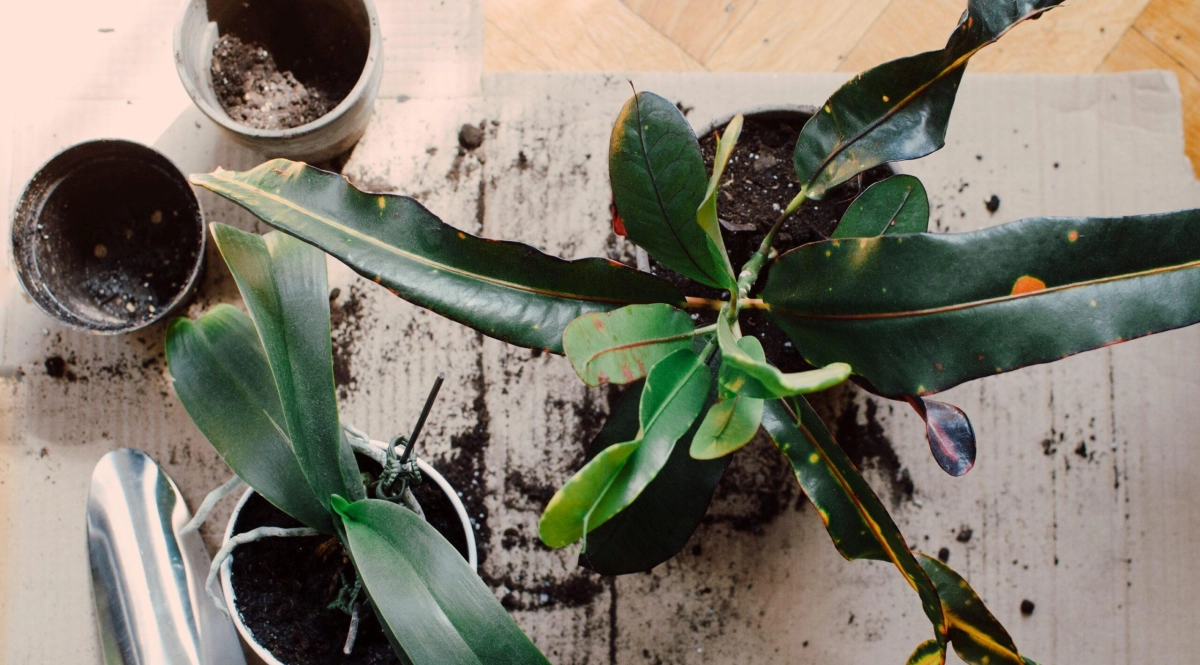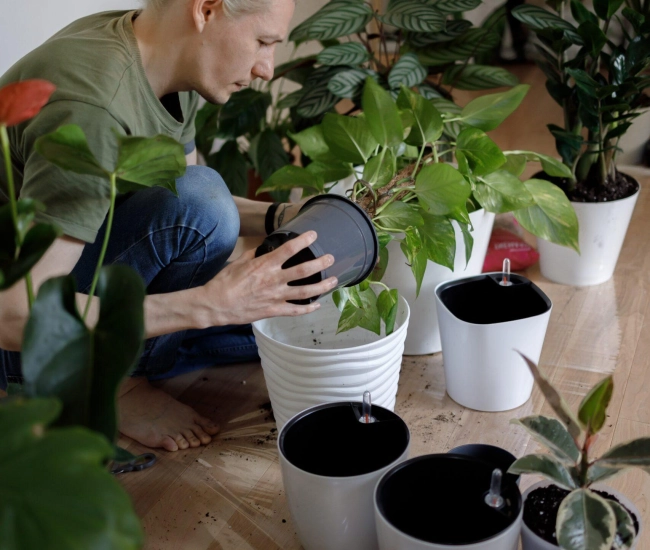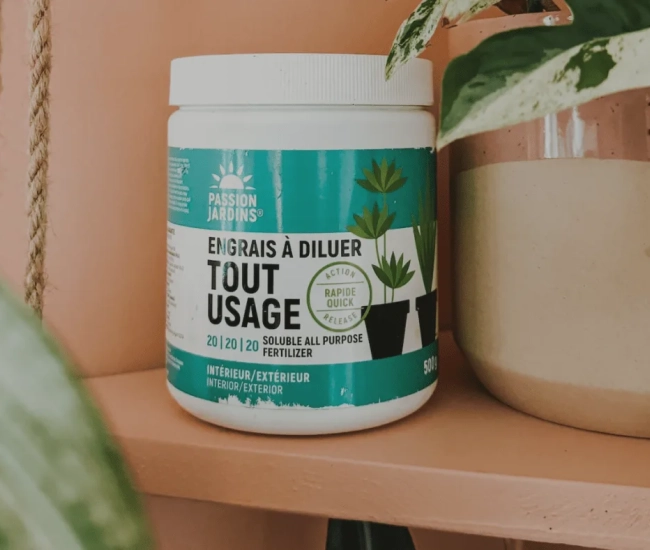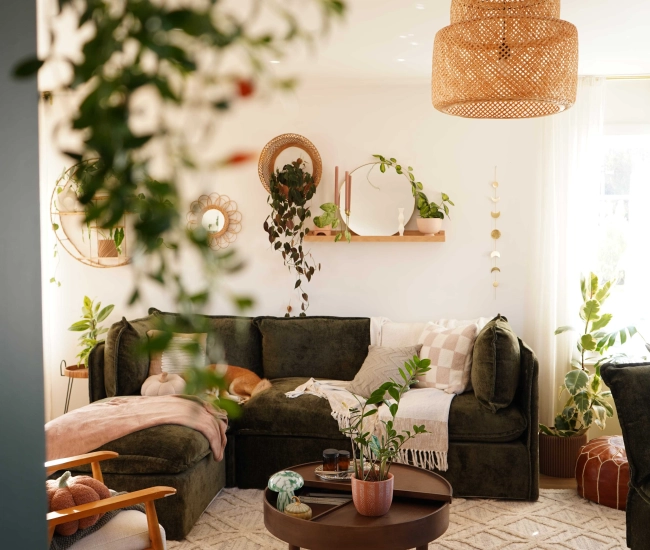
Many of you have been asking us for tips on your houseplants. Since each plant has different needs, it can sometimes be difficult to know what to do. Here, discover several tips on caring for your houseplants.
Watering
Watering is obviously a task not to be neglected, even though it's not always easy to know if we are watering our plants enough. The key to watering properly is to water abundantly, ensuring that the water reaches the collar of the pot. Then let the water drain through the drainage holes and water a second time to ensure the roots are completely moistened.
If you notice that the water has passed very quickly through the root ball or that the soil is not wet enough, you can always soak the bottom of the pot in a saucer or another container of water for 15 to 20 minutes. This soaking technique allows the roots to absorb the amount of water they need. Once done, place your plant back in its original environment until the next watering.
How to know if your plant has been overwatered or underwatered?
The signs of a lack or excess of water are quite similar. You may sometimes notice that the leaves and stems soften or that some leaves yellow and fall. A little trick to check if your plant has been sufficiently watered or not: Gently remove the plant from the pot and observe the roots.
· If the roots are white: your plant is well-watered and has enough water.
· If the last roots at the bottom are black: your plant is overwatered and you need to space out the waterings.
Repeat this same technique after a week; if the soil color seems quite pale, you are ready to water. If, on the contrary, the soil is still dark, please wait a little before watering again.
Fertilization
The ideal time to fertilize your houseplants is from the month of March since the days are getting longer and, consequently, the plants' growth resumes. To do this, we recommend using an all-purpose diluted fertilizer once a month at a rate of 1 teaspoon per liter of water.
Repotting
Why repot?
When the roots seem to want to come out of the pot through the drainage holes or if you notice that the plant wilts a few days after watering, it's time to repot. We recommend always repotting in a pot 1 to 2 inches larger than the original pot. If you choose a pot that is too large, the soil may take longer to dry, thus increasing the risk of root rot. If your plant suddenly has too much space, it may focus only on root development rather than continuing its growth.
The ideal soil for repotting is the Fafard Connaisseur Potting Soil for Indoor Plants.
What to do when the plant is already very large and it's impossible to repot?
When it's impossible to repot a plant because it has become too large, we suggest trying the topdressing technique. It's simple! Just remove 2 to 4 cm of old soil from the surface, taking care not to damage the roots, and replace it with new soil. Don't forget, of course, to water your plant well afterward.
So, there you go! We hope these maintenance tips for houseplants have helped you and that you've found answers to your questions. Keep following us on social media throughout the gardening season.
Tips and advice



